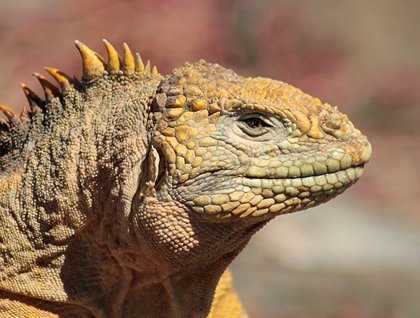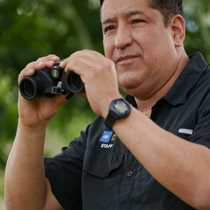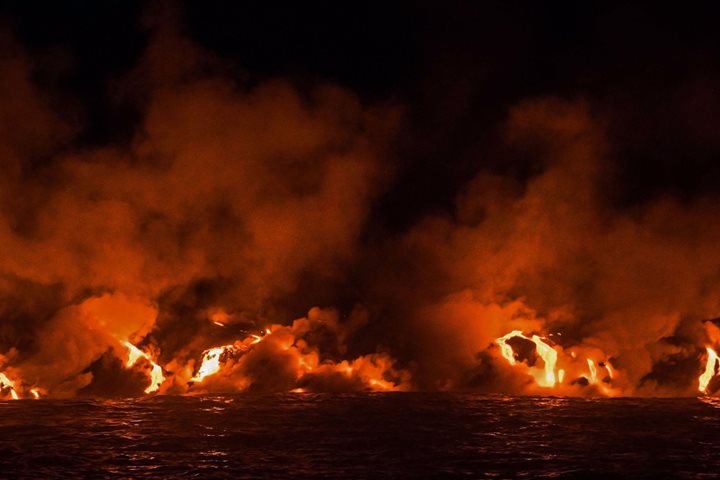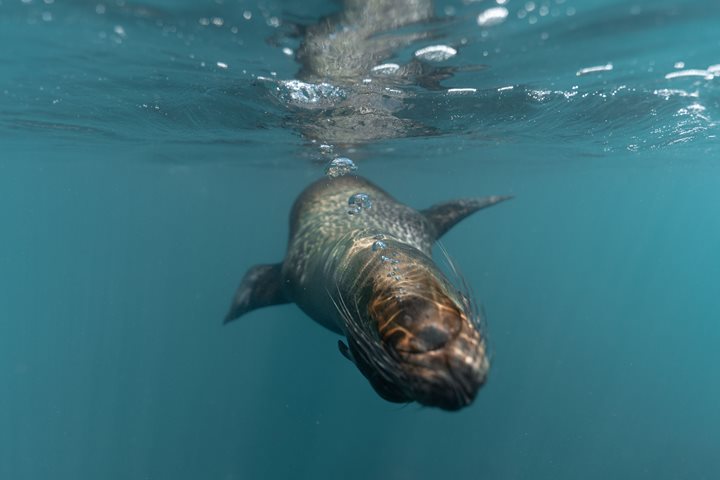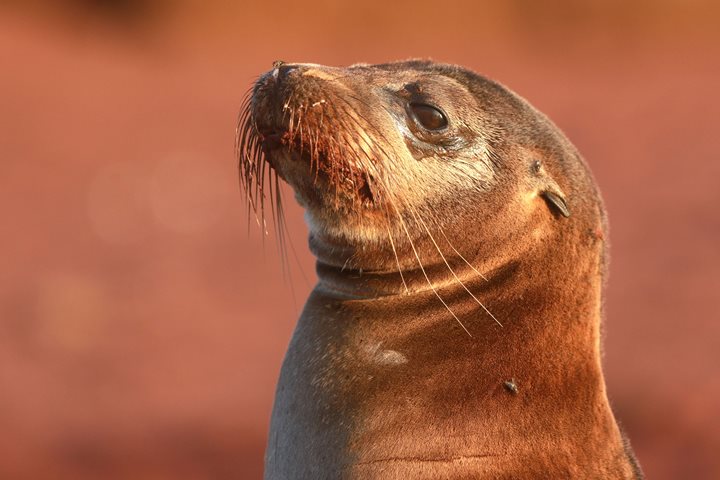A brand new day found us in front of one of the most beautiful hidden treasures of the Galápagos archipelago, South Plaza Island. This small island, which is in fact only some few hundred yards long, was once part of the ocean floor. The amount of wildlife that inhabits this paradise is overwhelming. A striking marine landscape which is dominated by a cacti forest surrounded by a surreal red carpet where colorful Galápagos land iguanas (Conolophus subcristatus) were seen roaming free everywhere. Several iguanas were observed while eating the spiny, but juicy, cacti pads. There is something remarkable in the presence of countless burrows that are used by land iguanas. Reptiles cannot sweat at all therefore they have to use external mechanisms to regulate their body temperature. In simple words, these creatures are cold blooded, meaning that they have to control their body temperature using the burrows either to warm up in the heat outside their shelters when cool, or going inside to reduce their body temperature from the rough hot conditions typical of the dry locations where they live.
On South Plazas Island there are several Galápagos sea lion colonies as well. Some big sea lions were seen searching for the best position for napping while some juveniles were either exploring or playing in the surroundings causing laughter and delight in their observers.
Further inland there is a spectacular cliff side where many seabird species can be observed either flying around or resting. Once we arrived at the highest point to walk along the cliff, we found the best site to watch seabirds in action. Galápagos shearwaters were skimming the ocean surface looking for food, Nazca boobies were also gliding along the cliffs. Swallow tailed gulls were seen either flying around or taking care of their hungry youngsters. Occasionally, frigatebirds were seen gliding in the blue sky as well.
After this magical morning visit we went back to the ship to join a presentation. Naturalist Juan Carlos Avila talked about the fish of the Galápagos. For around half an hour he made a great summary of what we have seen underwater this week.
After lunch we had some downtime before starting the afternoon’s activities. Soon after, it was time to get ready for kayaking along Santa Fe Island. In this remote location there is striking scenery where volcanic cliffs are filled with giant prickly pear cacti. Some guests opted to go snorkeling and they had a blast as waters were very calm today and many colorful reef fish species were seen, including many rays and sharks.
Once everyone was back onboard we put on our walking outfits to explore the trails of Santa Fe Island. The landing beach is home to many Galápagos sea lions that were the delight of their observers. The rocky inland trail led us to encounter a couple of pale brownish green land iguanas, the famous Santa Fe land iguana (Conolophus pallidus). This latter species, as is name implies, is only found on this small island, nowhere else in the Galápagos. Several juvenile Galápagos hawks were seen at a close ranges as well.
We finally came back on board with the inner feeling that we were privileged to spend a whole day in this paradise visiting two small, but unforgettable, islands that showed us the beauty of the Galápagos.

